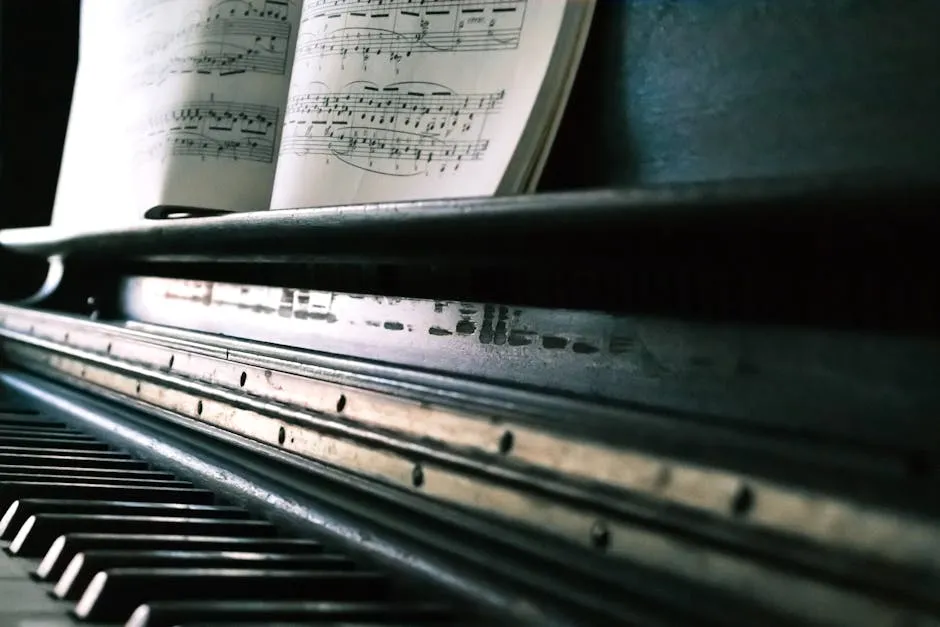
Why Do I Whistle an Octave Higher? Understanding the Highs and Lows of Whistling
Introduction
In a world where whistling might seem like a simple pastime, many people find themselves questioning the quirks of their own whistle. If you’ve ever found yourself inadvertently hitting those stunningly sharp notes, you may wonder: Why do I whistle an octave higher? Is it a gift, a curse, or just an acoustic anomaly?
Whistling, while often seen as a casual skill, actually involves a fascinating interplay of breath control, oral cavity shape, and sound physics. Some individuals are naturally inclined to reach those high notes, while others may struggle, leading to a range of pitches that can sound either delightful or a bit jarring.
This article will unpack the science behind whistling, the techniques that lead to those higher octaves, and the cultural significance of this art form. You’ll learn how some folks manage to soar above the conventional range, while others might find themselves stuck in the lower notes. Prepare to whistle your way through a harmonious exploration of sound, and perhaps even discover why your whistle is a bit like a rollercoaster ride—full of unexpected highs and lows!

Summary of Key Points
Whistling is not just a quaint hobby; it’s a complex interaction of breath control, oral cavity shape, and acoustic physics. This article will explore:
- The Physics of Sound: Sound waves are generated by vibrating air. Overblowing can create higher pitches, similar to a flute’s mechanics. Each note you hit results from your mouth’s shape and airflow.
- Whistling Techniques: Different methods exist, including breath control and mouth positioning. A well-formed embouchure helps keep those high notes from sounding shrill.
- Cultural Perspectives: Whistling appears in various musical genres and cultures. From folk songs to pop hits, it’s used to convey emotion and tell stories.
- Personal Experiences: Anecdotes from amateur and professional whistlers reveal the struggles and triumphs of hitting high notes. Many share tips that helped them refine their technique.
- Health Considerations: Whistling can strain your voice if done improperly. Techniques for maintaining vocal health are essential for long-term whistling success.
- FAQs: Common questions about whistling and vocal techniques, addressing everything from the whistle register to overcoming common pitfalls.
Understanding these aspects can empower you to control your whistle, whether you’re hitting high notes effortlessly or working hard to reach them. So, let’s get started on this melodic adventure!

Understanding the Basics of Whistling
What Is Whistling?
Whistling is a delightful art form that turns breath into musical notes. It has roots that stretch back to ancient civilizations. In fact, the whistle has been a companion to humans for thousands of years. From simple tunes to complex melodies, whistling has evolved into a skill appreciated across cultures.
There are various types of whistling techniques that enthusiasts can explore. The three main styles include finger whistling, lip whistling, and tongue whistling. Finger whistling involves using fingers to create a sound, often producing loud, piercing notes. Lip whistling relies on shaping the lips to form a tight seal, allowing airflow to create sweet melodies. Lastly, tongue whistling uses precise tongue movements to manipulate airflow, resulting in a clear, melodious whistle. Each method offers unique sounds and challenges, inviting everyone to find their favorite way to whistle.

The Science Behind Whistling
At its core, whistling is about sound waves and frequency. Sound is created by vibrations that travel through the air. When you whistle, your breath creates these vibrations, which are then shaped by your mouth. The shape and size of your oral cavity significantly influence the pitch of the sound produced.
When you blow air through a small opening, such as your lips or fingers, it creates sound waves. The faster the airflow, the higher the frequency and pitch of the sound. This is why you can produce higher notes by adjusting how you form your mouth and direct your airflow. The oral cavity acts like an acoustic resonator, amplifying certain frequencies while dampening others. So, when you whistle, you’re not just blowing air; you’re shaping sound!
Understanding this science helps you grasp how to control your whistle. By experimenting with mouth shapes and airflow, you can discover a range of pitches. Whether you’re attempting a soft lullaby or a high-energy tune, mastering these techniques can elevate your whistling game.
To refine your skills even further, consider picking up a copy of Beginner’s Guide to Whistling: Techniques and Tips. This book provides practical exercises to help you master the art of whistling.

Why Do Some People Whistle an Octave Higher?
Overblowing: The Key to Higher Notes
Have you ever wondered why some folks can whistle an octave higher effortlessly? The secret lies in a technique called overblowing. This nifty trick allows players to reach those lofty pitches that leave others in awe.
So, what exactly is overblowing? It’s the act of blowing air more forcefully through the whistle. This increased air pressure causes the sound waves to vibrate faster, effectively doubling the pitch. Just like playing a flute, where blowing harder can push notes higher, overblowing allows whistlers to tap into higher octaves.
Musical instruments like the flute and whistle rely on similar principles. When you blow into a flute, for example, the air passes through a small opening, creating vibrations. By overblowing, you can access higher pitches that might otherwise remain elusive. This technique gives players an impressive range and adds a touch of flair to their performances.
In summary, overblowing is your ticket to soaring high notes. So next time you find yourself whistling, remember that with a little extra breath, you might just hit that sparkling octave that turns heads and drops jaws!

Anatomy of the Whistling Mouth
Whistling isn’t just about blowing air; it’s a delicate dance of mouth shapes and tongue positions. The shape of your oral cavity plays a crucial role in the pitch of your whistle. A wider mouth can create lower notes, while a tighter shape can elevate your sound to stratospheric heights.
Think of it as crafting a mini instrument with your mouth. When you pucker up, you create a smaller opening, which increases air pressure and raises the pitch. Similarly, how you position your tongue can significantly affect your whistle. For higher notes, your tongue should be positioned closer to the roof of your mouth. This simple adjustment can make your whistle sound like a symphony of high notes.
Lip formation is equally important. A firm yet flexible lip shape allows better control over the airflow. If your lips are too loose, your notes may end up sounding more like a dying cat than a sweet melody. Finding that sweet spot of lip tension takes practice, but once you master it, you’ll be whistling like a pro!
If you’re looking to maintain vocal health while whistling, consider using a Vocal Steamer for Throat Health. This handy device helps hydrate your vocal cords and keeps them in top shape.

Personal Experiences and Anecdotes
Whistlers across the globe share fascinating stories about their high-note escapades. One user from a whistling forum confessed that they often found themselves playing in open sessions with others. They loved bringing their low D whistle to balance out the overpowering sound of multiple high D whistlers. It turns out, a well-placed low note can be the secret ingredient to a harmonious ensemble!
Another whistler shared their journey from struggling with high notes to effortlessly hitting them. They discovered that the key was practice and experimenting with their embouchure. They found that every little adjustment, from tongue position to lip tension, made a world of difference.
Online communities are brimming with tips and tricks. Many whistlers recommend focusing on breath control and not overblowing, as this can lead to harsh sounds. By tuning into their bodies and understanding how their anatomy affects their whistle, they transformed their experience from frustration to joy.
It’s clear that whistling isn’t just a skill; it’s a shared journey of discovery and creativity, uniting enthusiasts in their quest for the perfect note!

Psychological and Social Aspects
Whistling can evoke a range of emotions. It often carries a sense of joy and freedom. Think about it: when you whistle, you’re not just making noise; you’re expressing yourself! It’s like a musical exclamation point to your mood. Many find that whistling elevates their spirits. It can be a way to channel energy or even relieve stress.
In social settings, whistling serves as a unique form of communication. It’s a non-verbal cue that can convey everything from excitement to playfulness. Picture this: you’re in a crowded park, and instead of shouting for a friend, you let out a cheerful whistle. Instantly, they know you’re nearby and ready for fun. It’s like having a secret code that only fellow whistlers understand.
Moreover, whistling can create bonds between people. Sharing a tune or a simple whistle can spark conversations and laughter. It’s a universal language that transcends barriers. Whether at a family gathering or a music festival, a whistle can break the ice and unite people through shared melodies.

Techniques for Controlling Pitch
Exercises to Improve Whistling
Ready to take your whistling skills to the next level? Let’s get whistling! Here’s a step-by-step guide to practice whistling in different octaves:
- Warm Up: Start with simple lip trills. This helps loosen your lips and prepares your mouth for whistling.
- Pucker Up: Form a tight pucker with your lips. The smaller the opening, the higher the pitch!
- Breath Control: Take a deep breath. Exhale slowly while maintaining your pucker. Feel the air flow evenly.
- Try Different Notes: Begin by whistling a single note. Gradually move to higher pitches. Use a piano or app to match your notes.
- Octave Jumping: Once comfortable, practice jumping between octaves. This builds your control and confidence.
- Record Yourself: Listen to your progress. It’s a fun way to track improvements and identify areas to focus on.
For breath control, practice inhaling deeply through your nose. Then exhale steadily while whistling. This technique helps maintain a consistent airflow. Also, relax your throat and avoid straining. Whistling should feel effortless, not forced!

Tools and Equipment
When it comes to whistling, the right tools can enhance your sound. Here’s a brief overview of different types of whistles and their impact on sound production:
- Plastic Whistles: Affordable and lightweight, these are perfect for beginners. They produce a bright sound and are easy to control. Brands like Dixon Plastic Whistle offer great options.
- Wooden Whistles: Known for their warm, rich tones, wooden whistles are favored by many advanced players. They require more maintenance but provide a unique sound.
- Metal Whistles: These are durable and produce a sharp, clear tone. They’re great for outdoor settings where you want your sound to carry. You might want to check out the Metal Whistle by Acme for a reliable option.
For beginners, I recommend starting with a plastic whistle. They’re easy to handle and won’t break the bank. Once you’ve honed your skills, consider investing in a wooden or metal whistle for a different tonal experience.
Additionally, look into specialized mouthpieces that can help regulate airflow. The Parks Every Whistle with Tone Ring is a great choice. It adjusts blowing pressure, making it easier to hit those high notes.
With the right practice and tools, you’ll be whistling like a pro in no time!

Health Considerations for Whistlers
Strain and Injury Prevention
Whistling may seem harmless, but it can cause vocal strain. Common vocal injuries include nodules, hoarseness, and muscle tension. Overblowing often leads to these issues. Straining your vocal cords can result in discomfort and long-term damage.
To maintain vocal health, start with these tips:
- Warm Up: Like any athlete, your voice deserves a warm-up. Simple humming or lip trills can prepare your vocal cords for the task ahead.
- Hydrate: Water is your best friend! Staying hydrated keeps your vocal cords lubricated and reduces strain. Don’t forget to use a Hydration Reminder Water Bottle to keep track!
- Control Breath Pressure: Avoid overblowing. Instead, focus on steady airflow. Too much pressure can lead to harsh sounds and vocal fatigue.
- Rest Your Voice: If you notice strain, take breaks. Your vocal cords need time to recover, just like any muscle.
Practice these techniques regularly. Your whistle will thank you for it!

Seeking Professional Guidance
Consider vocal training if you experience persistent strain. A speech therapist can provide valuable insights into proper technique, helping you avoid injuries.
If you aspire to reach higher notes effortlessly, professional coaching is beneficial. A trained instructor can guide you through exercises tailored to your voice. You might also want to check out Vocal Health: A Guide for Singers and Whistlers.
Don’t hesitate to seek help! Improving your whistling technique can make a world of difference. It’s not just about hitting high notes; it’s about protecting your voice and enjoying the art of whistling fully.

Conclusion
In conclusion, whistling an octave higher is not merely a quirk of your anatomy; it’s a fascinating interplay of science, culture, and personal technique. Whether you find joy in the soaring notes or struggle to control them, understanding the mechanics can enhance your experience. So next time you whistle, take a moment to appreciate the sound waves dancing through the air and the unique character of your own voice.
Please let us know what you think about our content by leaving a comment down below!
Thank you for reading till here 🙂
All images from Pexels




